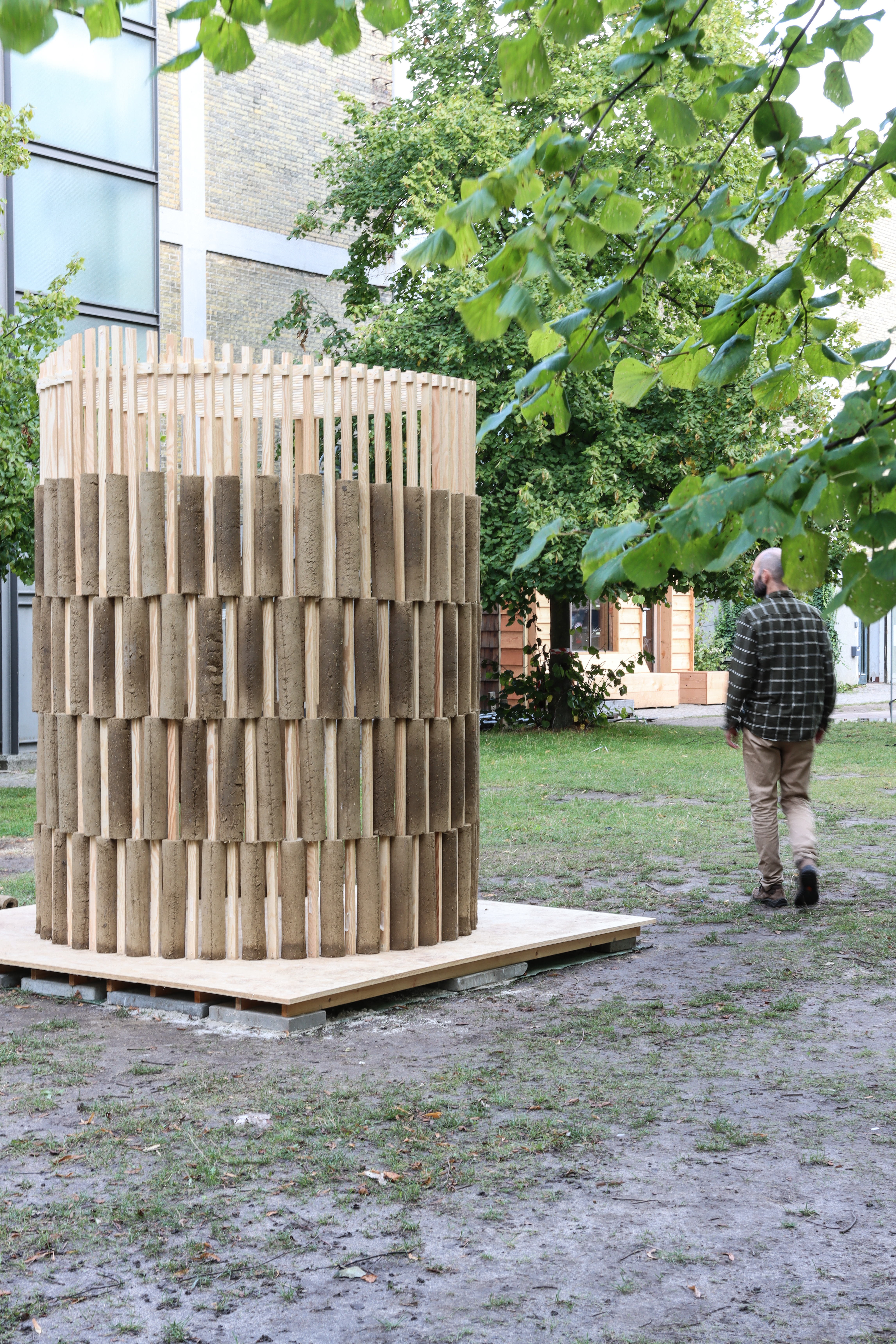Copenhagen Structure Biennial 2025 – the worldwide occasion’s inaugural version – launches this September (working till 18 October) underneath the theme ‘Sluggish Down’. Organised by CAFx (Copenhagen Structure Discussion board) with assist from a number of our bodies, together with LINA European Structure Platform and the Obel Award amongst others, and led by Josephine Michau, curator of the Danish Pavilion on the Venice Structure Biennale 2023, the survey of labor on present gives a spectrum of spatial responses to the ‘Nice Acceleration’ – a interval in historical past characterised by unprecedented progress and vitality consumption. The tasks displayed take a look at alternatives for deceleration and de-growth throughout the building business as a response to ecological collapse.
Copenhagen structure week 2025, ‘Sluggish Down’ exhibition
(Picture credit score: Maja Flink)
Copenhagen Structure Biennial 2025 says: ‘Sluggish Down’
A central group present underpins this thesis, exploring choices and design options. It’s positioned within the Halmtorvet 27 cultural hub, and from there, guests are invited to discover town by means of a collection of extra installations, tasks and activations round the primary theme.
At one finish of the dimensions, a 28 sq m pavilion – aptly titled Sluggish Pavilion – by rising architects Slaatto Morsbøl at Søren Kierkegaard Plads reuses a palette of discarded supplies – brick, timber and thatch – in a manner that repackages them in a recent manner.

(Picture credit score: Maja Flink)
Sourced from varied demolition websites in Better Copenhagen, a easy timber body construction is infilled with bricks to type each partitions and flooring. The perforated brick, a standard and ubiquitous sight within the metropolis, is lower in half. This not solely doubles the amount of fabric accessible but additionally reveals a textured inside which the architects deploy in varied ingenious methods. The flooring reveals the brick mortared in a standard method to create the impact of a tiled flooring. The partitions present the brick in use as infill in its pure state. There may be an academic capability to the pavilion in speaking the completely different expressions of a fabric.

(Picture credit score: Maja Flink)
The theme of slowness is embedded in each the pavilion’s building and the intent for customers to have interaction with it. Bricks had been lower in half by hand, the thatching reed was sorted by size and sewn onto material strips, which had been then mounted to the roof modules. The act of chopping to show what’s hidden extends to the reclaimed air flow pipes, that are lower in half to type a scalloped roof profile.
All of this constitutes an interrogation of ordinary building processes predicated on velocity. The suspension of reed from the ceiling, opposite to its pure locus within the floor, and the unorthodox presentation of brick, have interaction the guests in a sensory expertise, difficult standard business aesthetics.

(Picture credit score: Hampus Berndtson)
‘By highlighting the imperfections and inconsistencies of used supplies, we purpose to point out that these qualities could be a power, not a shortcoming. There may be richness and character in what has already had a life, and we consider that may form a extra considerate, resource-aware structure,’ clarify Slaatto Morsbøl’s founders, Thelma Slaatto and Cecilie Morsbøl.

(Picture credit score: Maja Flink)
On the different finish of the dimensions is Thoravej 29, a former 1967 manufacturing facility constructing repurposed to accommodate a mixture of galleries, cafés and workspaces. Right here, the idea of reuse is pushed with the added ambition that any excavation or demolition waste is to be reincorporated into the end result as a lot as attainable. The temporary, which known as for a vertical connection between current flooring, necessitated that cut-outs be fitted into the design. So, slightly than discard the cut-out parts, the group retained and positioned them at angles to type helps for brand new staircases, embracing an structure of subtraction.

‘A Chapel Retold’, a biennale venture the place artists and designers take over a now-defunct funeral chapel from 1945
(Picture credit score: Laura Stamer)
There’s a new vitality created on this vocabulary the place acquainted constructing parts – partitions, doorways, flooring – are tailored to carry out new roles which might be unfamiliar. The brand new stairs, clearly recognisable as the previous ribbed slab, have interaction guests to look once more and refamiliarize themselves with an area they’d grown accustomed to. Elsewhere, previous façades are reinstated as pavement, and doorways grow to be furnishings, persevering with this materials transformation of states.

(Picture credit score: Laura Stamer)
‘Every layer of the construction, even these historically deemed insignificant, is thought to be an asset, culminating in 95 per cent of the prevailing materials to be retained and repurposed throughout the constructing itself,’ explains Søren Pihlmann, founder at Pihlmann architects, the observe behind the venture.

‘Clay Pavilion’ on the Royal Danish Academy
(Picture credit score: Isak Worre Foged)
What these tasks – and extra throughout city – supply is a compendium of approaches. From the incremental work of small-scale practitioners to large-scale business tasks, the notion of limitation historically related to reuse of current supplies, sources and construction is recast as a generative instrument, unlocking the parameters of spatial risk in direction of new architectural expressions.
Supply: Wallpaper

